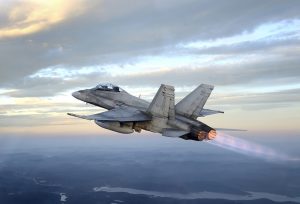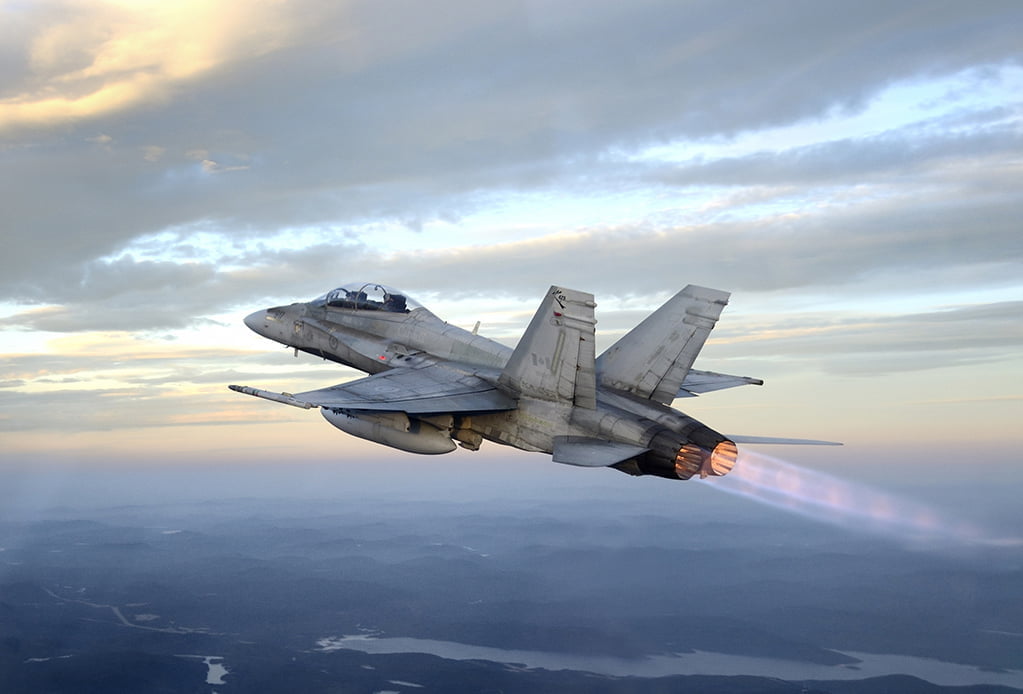2016-09-21 By Danny Lam
The Canadian Air Force along with the entire Canadian Defence Force faces a tough transition.
The challenges to Canada associated with developments in both Europe and Asia or what the recent NORTHCOM/NORAD Commander referred, as threats from the 10 and 2 O’clock are going up, not down.
Yet the position of the government seems fixated on not addressing the way ahead, but ways to implement their campaign pledge to not buy the F-35.
It is time for the government to reconsider this position, given that all of the key allies for Canada in the 10 and 2 O’clock are F-35 partners, but also that the alternative is not really cost effective in any case.
It would make sense to have a competition but one in which the choice of new combat aircraft be put within a broader context, namely, how to shape an overall airpower transition in which manned, and unmanned systems will evolve in the decades ahead, and the integration of air with ground and maritime will grow as Canada’s partners work to shape integrated force structures.
The Canadian choice must consider the broader context, and not the narrow question of a fighter replacement.
Recently, the Standing Committee on National Defence release a report which was entitled “Canada and the Defence of North America: NORAD and Aerial Readiness.”
“Today, NORAD is once again faced with new military technologies and threats,
forcing it to review its capabilities and processes in order to ensure that it remains relevant and ready to efficiently respond to an increasingly complex and ambiguous international security environment.”
The question on the table is how might Canada best support its own interests through the modernization of NORAD and enhancing its maritime, air and ground-based defense capabilities?
“The RCAF, however, needs new aircraft and infrastructure to replace some of its aging assets and to ensure its capabilities remain relevant. A few procurement and infrastructure renewal projects are currently underway, but many more are expected to be launched in years to come.
It is clear that billions of dollars will need to be invested in the RCAF in the near future, not only to maintain its level of readiness and to ensure that its contributions to NORAD as well as search and rescue operations, in particular, remain as efficient and successful as can be, but also to enhance its capabilities to respond to any new challenge or threat the international security environment may throw its way.
The security of Canada and Canadians depends on it.”
Testimony to the Committee highlighted in many cases the need for any fighter selection to be part of wider multi-domain modernization effort.
In other words, it was not just about selecting a fighter aircraft, it was choosing one which could lead, support or was symmetrical with a broader transformation approach.
It would be wise for the government to have a competition for the fighter replacement, but one, which put that selection into the broader dynamic of defense modernization. Which choice would lean forward to the future of defense transformation, rather than simply deliver a replacement fighter aircraft?
The turn of the 20th and 21st Century will see acceleration in the pace of technical change equal to or greater than the Industrial revolution.
Widespread deployment of microelectronics, computing, and communication, advanced manufacturing and other technologies that are fast moving and evolving in civilian applications have found their way as well into military systems and as the military transforms among Canada’s allies there is a bounce back effect as well as forces are modernized and transformed.
Operational requirements like replacements for Canadian Fighters that took years to draft, decades to implement, procure and deploy, are becoming challenged by faster moving peer competitors who can often outspend NATO allies.
Consequently, Canadian Forces are stuck with antiquated gear — rather than constantly refreshing their stock as new innovations and opportunities occur.

© 2012 DND-MDN Canada
That may have been fine in the 1970s, but in an era of rapid technological change, it is fatal.
Technological revolutions are changing threats to encountered by Canadian Forces faster than the procurement and supply system can supply appropriate equipment like MRAP vehicles in Afghanistan. Wartime pressures further accelerate evolution.
Traditional NORAD missions protecting against bombers and cruise missiles transiting the high Arctic to attack urban centers in North America is insufficient. Year round shipping, exploitation of Arctic resources and non-traditional security threats at sea or on land make for a much more complex security challenge by the mid-21st Century.
The Trudeau Government elected in October 2015 opted to re-visit the decision to acquire the Joint Strike Fighter after indecision under the previous government.
Between September 2015, the Liberals vacillated from an initial pre-election proposal to “save money” by not buying the F-35 in favor of “many [unspecified], [allegedly] lower-priced options”, to an “interim” buy of 20 F/A-18E/F Super Hornets, to most recently, to request information from many vendors including Lockheed-Martin’s JSF which “does not work and is far from working” that reached IOC on August 2, 2016 (F-35A) and July 31, 2015(F-35B).
The F-35 as a software upgradeable aircraft, along with others such as the Australian Wedgetail and the P-8/Triton combination being flown by the US Navy, Australia and in the P-8 case soon by the UK, provide upgradeable options which are symmetrical with dynamic change.

An initial buy of three squadrons of F-35s could be seen as a way to accelerate change across the force, and Canada can decide where to evolve its airforce in the future as new unmanned and other manned systems enter the forces of the US and our closest allies.
Together with a modest life extension program for CF-18s and certain interoperability upgrades, the F-35’s superior sensor and other capabilities can enhance the capabilities Canada’s fighter fleet.
Armed with data on the true costs of each platform, including the total cost of support assets: tankers, command and control & electronic warfare craft, Canadian Forces can make better choices for the next buy
Preserving options to the early 2020s allow for more visibility on issues like the vulnerability of bases and command and control nodes. Implicit in the Canadian statement of operational requirements is attacks on rear-echelon infrastructure within North America defended by NORAD assets are unlikely to succeed. This is a very dubious assumption given what is known of Russian and Chinese rearmament trajectories.
The proliferation of UAVs, stealthy supersonic cruise / hypersonic missiles and fractional orbital bombardment systems in the next decade will blur the distinction between tactical and strategic weapons defined by the INF Treaty — which may be abrogated like the ABM treaty. These systems, used with state-of-the-art EW systems, offer an opponent the opportunity to launch a conventional first strike against infrastructure that effectively disables fighters dependent on them.
Existing NORAD bases, few and target rich, risk obsolescence. While bases can be defended, hardened, staffed and equipped with rapid runway / infrastructure repair capabilities as they are in Western Europe, it is a costly option. Dispersal of bases, or should Canada field an Ice Breaker Landing Helicopter Dock (LHD) that can serve a range of sovereignty missions in the Arctic, would favor STOVL capable craft like F-35Bs and a key advantage of the F-35 program is the ability to shift among the types of F-35s within the program.
Alternatively, the US Navy’s CBARS or similar craft can improve the range and endurance of any fighter and dependence on a few bases or vulnerable aerial refueling and command and control assets.
Given the vast expanse that Canada must patrol and defend, it is questionable whether any manned fighter will operate by itself in the defense of Canadian maritime and airspace or in Gortney’s terms, the 10 and 2’ Oclock.
This is why the former head of NORAD spoke of the need to shape a kill chain, which the current US Navy leadership is now reworking to become a kill web with distributed strike, ISR and C2 and a concept very relevant to Canadian defense interests.
For the US Navy, the F-35 is seen as a key enabler of the kill web, but is not and of itself capability.
Admiral Gortney is quoted in the Defence Committee report and in an interview conducted towards the end of his tenure, that it was important to combine a fighter buy with new maritime and other air-sea capabilities. Again, the fighter decision needs to be put into this broader context.
It is a reasonable bet that during the transition, we will be operating with a mixed fleet of manned, unmanned autonomous and semi-autonomous platforms as issues ranging from force structure & organization, doctrine, political, economic and legal issues are worked through.
During times of rapid change, the premium is on keeping options open while committing enough resources to meet current and near term challenges and surviving a conflict long enough for reinforcements to arrive should deterrence fail.
Danny Lam is an independent analyst based in Canada.
For the Admiral Gortney interview, see the following:
http://defence.frontline.online/article/2016/3/4712-NORAD/NORTHCOM-
http://breakingdefense.com/2016/04/northcom-defending-north-america-at-ten-and-two-oclock/


